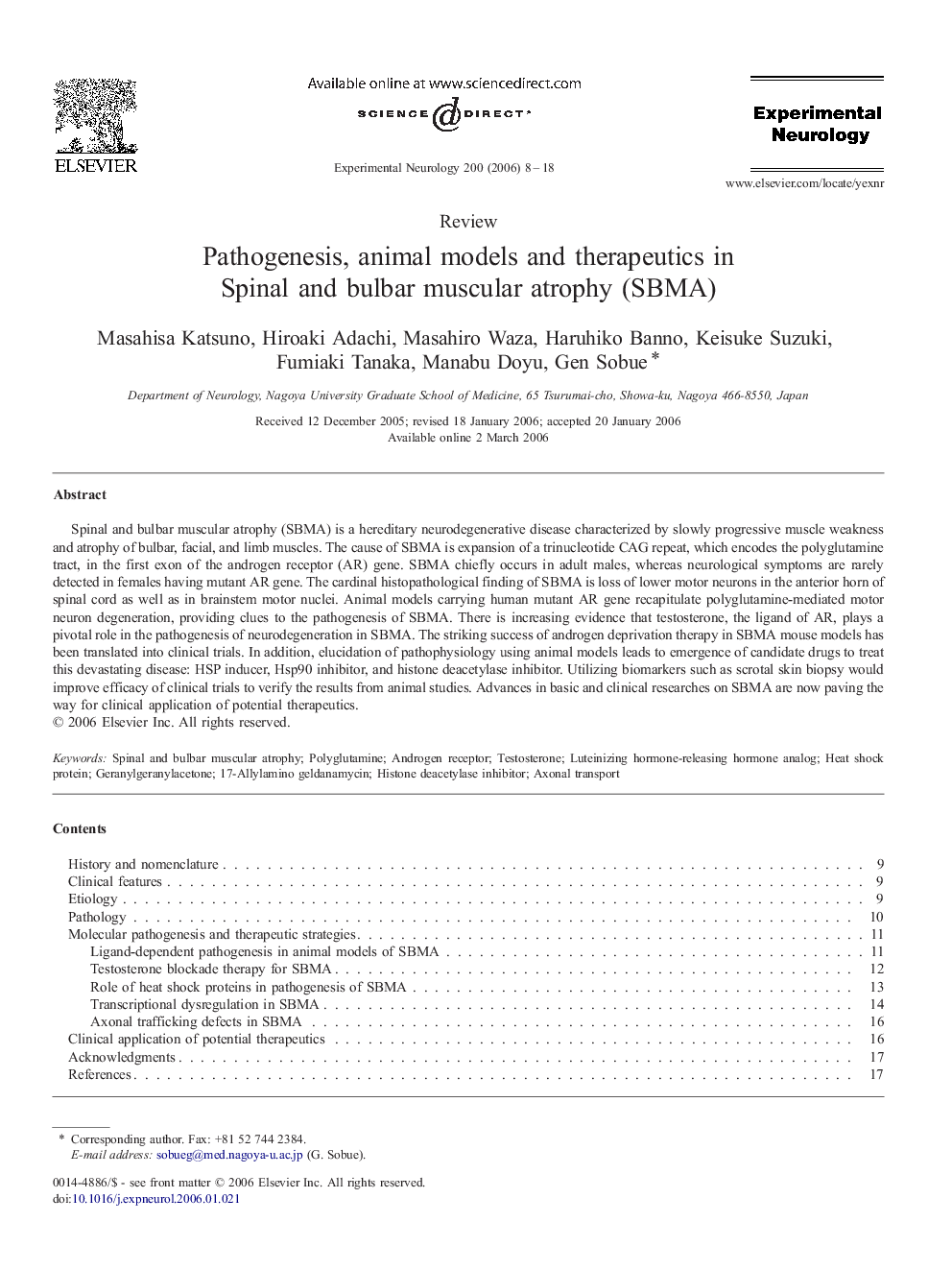| کد مقاله | کد نشریه | سال انتشار | مقاله انگلیسی | نسخه تمام متن |
|---|---|---|---|---|
| 3057383 | 1186597 | 2006 | 11 صفحه PDF | دانلود رایگان |

Spinal and bulbar muscular atrophy (SBMA) is a hereditary neurodegenerative disease characterized by slowly progressive muscle weakness and atrophy of bulbar, facial, and limb muscles. The cause of SBMA is expansion of a trinucleotide CAG repeat, which encodes the polyglutamine tract, in the first exon of the androgen receptor (AR) gene. SBMA chiefly occurs in adult males, whereas neurological symptoms are rarely detected in females having mutant AR gene. The cardinal histopathological finding of SBMA is loss of lower motor neurons in the anterior horn of spinal cord as well as in brainstem motor nuclei. Animal models carrying human mutant AR gene recapitulate polyglutamine-mediated motor neuron degeneration, providing clues to the pathogenesis of SBMA. There is increasing evidence that testosterone, the ligand of AR, plays a pivotal role in the pathogenesis of neurodegeneration in SBMA. The striking success of androgen deprivation therapy in SBMA mouse models has been translated into clinical trials. In addition, elucidation of pathophysiology using animal models leads to emergence of candidate drugs to treat this devastating disease: HSP inducer, Hsp90 inhibitor, and histone deacetylase inhibitor. Utilizing biomarkers such as scrotal skin biopsy would improve efficacy of clinical trials to verify the results from animal studies. Advances in basic and clinical researches on SBMA are now paving the way for clinical application of potential therapeutics.
Journal: Experimental Neurology - Volume 200, Issue 1, July 2006, Pages 8–18